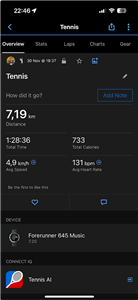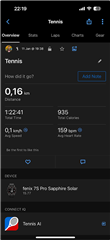Hello,
I published bunch of apps tracing racket sports like Tennis, Padel, Squash etc.
1. The problem is that when GPS is OFF and activvity is supposed to calculate the distance based on steps the distance is extremally low eg. after 1hr activity the distance is 50-200meters. At the same time it can be checked that 2k steps were made during activity. Was this issue ever addressed by garmin? This issue is being reported to me by a lot of users unfortunately.
2. I'm going to implement distance measurement on my side based on avg step length * step count. Is there a way to store it in fit file in such a way that it will replace the native/default distance of activity?



